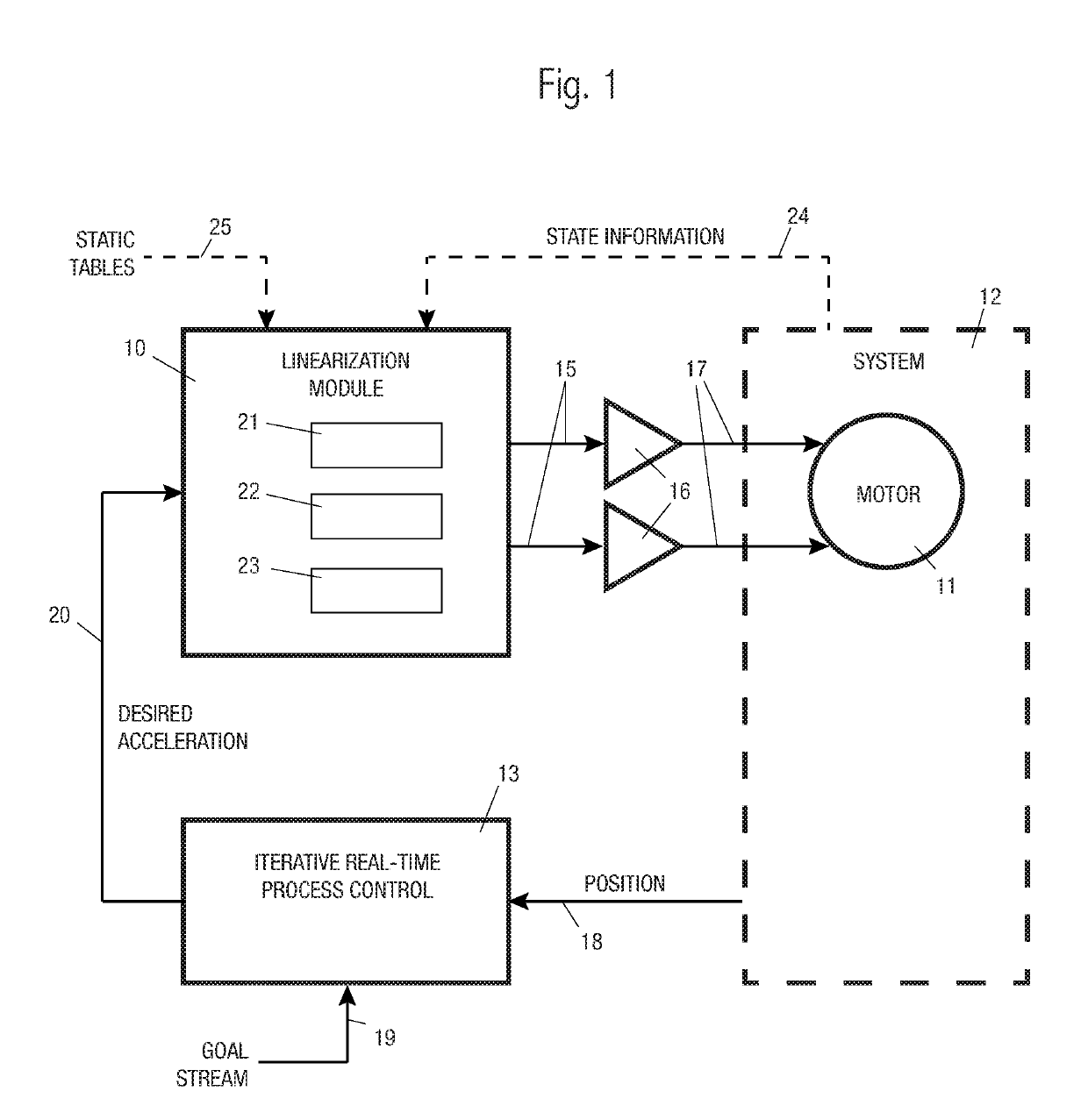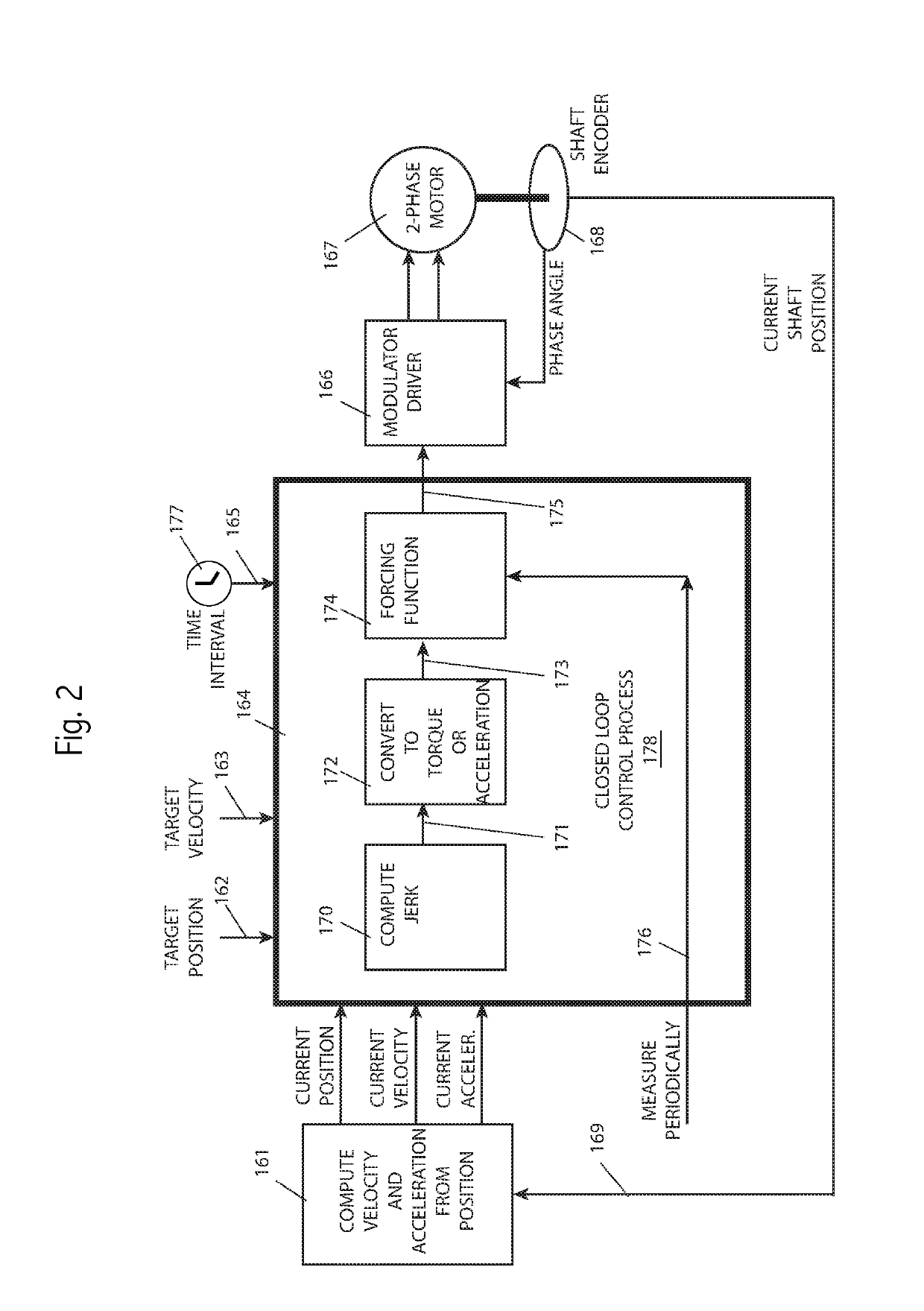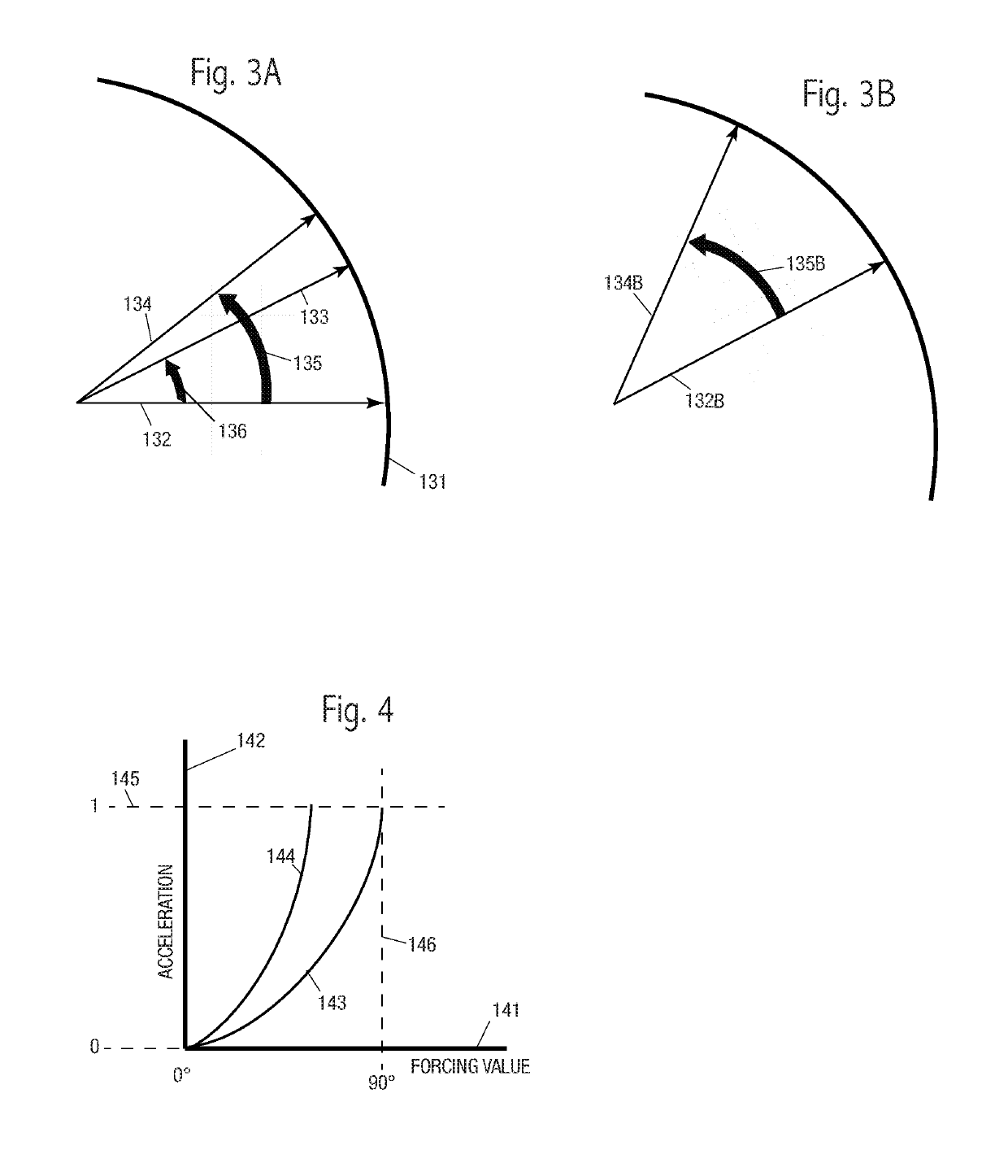Device and method of motion control
- Summary
- Abstract
- Description
- Claims
- Application Information
AI Technical Summary
Benefits of technology
Problems solved by technology
Method used
Image
Examples
Embodiment Construction
[0030]Descriptions, scenarios, embodiments, and Figures are exemplary and non-limiting.
[0031]We begin our discussion with terminology: “acceleration” includes both linear acceleration and torque, unless otherwise clear from the context. “Velocity” includes both linear speed and rotational speed, unless otherwise clear from the context. “Force,” includes both linear force and rotational force. “Position” includes a position in any coordinate system, including both scalars and vectors, unless otherwise clear from the context. Coordinate systems may be Cartesian, polar, SCARA (Selective Compliance Articulated Robot Arm), hybrids, or complex non-linear systems. Position is often, but not limited to, a motor shaft angle. “Motor” includes any type of mechanical actuator, unless otherwise clear from the context. “Table” includes functions with defined inputs and outputs, otherwise clear from the context. A table may be a function. “Jerk” is the derivative of acceleration. Acceleration may ...
PUM
 Login to View More
Login to View More Abstract
Description
Claims
Application Information
 Login to View More
Login to View More - R&D
- Intellectual Property
- Life Sciences
- Materials
- Tech Scout
- Unparalleled Data Quality
- Higher Quality Content
- 60% Fewer Hallucinations
Browse by: Latest US Patents, China's latest patents, Technical Efficacy Thesaurus, Application Domain, Technology Topic, Popular Technical Reports.
© 2025 PatSnap. All rights reserved.Legal|Privacy policy|Modern Slavery Act Transparency Statement|Sitemap|About US| Contact US: help@patsnap.com



